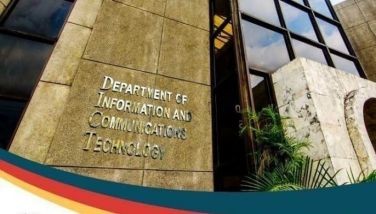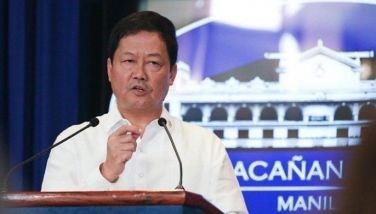A country under siege

In the past few days I have been occupied with a personal problem I did not have the time nor the inclination to write my column and comment on the flavor of the month — “Lozada’s sensation.”
My personal problem still occupies most of my waking hours, but the Lozada episode needs to be commented on. My view may be different from what others have. In brief, the developing theme being pushed by the Opposition and their foreign and local political operators would like us to think that in Lozada, they have the magic ingredient to finally oust President GMA.
These sectors have been at it since July 2003 with plots and dramas — Hyatt 10, the arrival of a UN rapporteur to report on extrajudicial killings, etc. — that could make Filipinos angry enough to agree to topple government. They calculate that the crying Lozada is heroic enough, supported by a cast of nuns and priests that should finally drive Filipinos to the streets as they did in Edsa 1 and 2 to justify regime change. That is the ‘communal action’ being sought by the bishops. They may have it right that Lozada “is” or “can be made” into a heroic figure but I am not sure that he can summon widespread sympathy necessary for a public showing that would justify toppling the Arroyo government before 2010.
* * *
While there may have been more substantive reasons to want to oust President GMA, the battle is increasingly about timing. There will be some red faces if a regime change cannot be made to happen before 2010. In this, President GMA has my sympathy, she must hang on and beat her enemies at their own deadline. It is no small thing if she wins in this seemingly little detail. If she hangs on till 2010 she preserves the country’s right to sovereignty. As for the rest of us we must strive to strengthen institutions for accountability with our own efforts, however long it takes, instead of serving colonial surrogates in the struggle for dominance in our own country.
Indeed the plotters are already behind schedule. There could be some red faces if this does not happen soon. Had it been successful in 2003, it would have been more decently spaced, and probably escaped the scrutiny of more informed Philippine watchers. Unfortunately it has dragged on from one strategem to the next exposing game of regime change. To their chagrin the usual tactics from their toolkit, no longer worked. The latest plot follows a predictable template to divide and rule. The de Venecia-Arroyo combine that held together through thick and thin of attempted impeachments is broken. The elites can always be counted upon to fight for the spoils of power or as one mblogger put it, “expect a heightening of tensions between inter-elites which could lead to an implosion”.
Written in December and specifically blaming George Soros to be behind it predicted GMA’s ouster from power possibly in “the first quarter of next year.” Well, we are now into February so the pressure grows heavier. Even as I write they are hoping for a massive show in Mendiola or
Joey de Venecia testifying in the Senate might have been innocent when he said Soros was his backer. He was talking of him only as a financier, not as a political activist with a taste for foreign intervention. It is well known that he was also at the two Edsas and the Rose revolution in
An old hand in
The ZTE controversy is a detail not the substance of the drama being played out, a tree not the forest of a vision for our country. It would be wrong to allow other people’s agenda with the cooperation of locals to wreak havoc in the Filipino nation’s development because of quarreling elites.
* * *
To Filipinos confused about Lozada or have a suspicion of a wider background in which it is taking place, should read Overthrow:
“When I started becoming politically aware, one of the first things that caused me to sit up and take notice was the CIA’s role in bringing about “regime change” around the world. During the Iranian hostage crisis, Time magazine once carried a single-line mention of the 1953 CIA-directed removal of Mohammed Mossadegh that surprised the hell out of me. In the early 1980s, when Missing came to
Those of us who disliked her dismissed her mutterings. Only later did I learn that her accusations — exaggerated as they may have been — were based in part on the Pinochet takeover and the 1975 overthrow and killing of Sheikh Mujibur Rahman in Bangladesh next door in a US-approved coup,” writes Kinzer a former New York Times bureau chief.
The book attempts a “comprehensive” guide to
“In three and a half torturous years of war [in the
Kinzer concludes the Bush Administration is a throwback to those of William McKinley and Teddy Roosevelt a century ago, when the
- Latest
- Trending






























